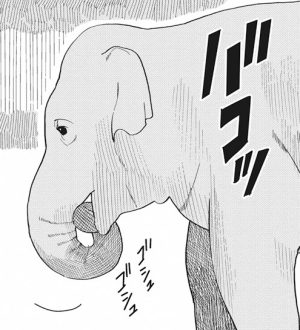Using context to deal with missing words
One aspect of Japanese that makes it seem more difficult than it really is for beginning learners is the perception of missing words.
In Japanese, information already known by context is typically not spoken. Consider for example this line from 「三ツ星カラーズ」:

When a sentence contains an action (a verb), there must also exists who or what (the subject) is doing the action.
Some actions are performed on something else (an object).
In the above scene, the subject and the object are not spoken, leaving only the verb.
“Ate—!”
If we want to understand what she’s saying, this sure leaves a lot to be desired!
This lack of words can seem problematic for beginning learners of Japanese, as short sentences appear to be missing vital information. However, consider the same sentence in English:

Filling in the pronoun “he” for the subject, and the pronoun “it” for the object, we find this has not introduced any new information into the sentence.
The subject is still unknown. Who is “he” that ate it?
The object is still unknown. What is “it” that he ate?
These words, which are unspoken in Japanese, and are substituted by pronouns in English, are expected to be known from context.
The context consists of the panels before and/or the panel containing the dialogue. In some cases, the following panels may even reveal the necessary context.
Watch what happens to the dialogue when it is viewed in context. Irrelevant dialogue has been removed from the scene, leaving only the artwork to provide the context:






“He” is an elephant. “It” is an apple.
If you find a sentence is missing vital information, chances are you’re missing part of the context.
In the above example, the context is provided entirely by the artwork. In other cases, the context is provided by either dialogue or narration.